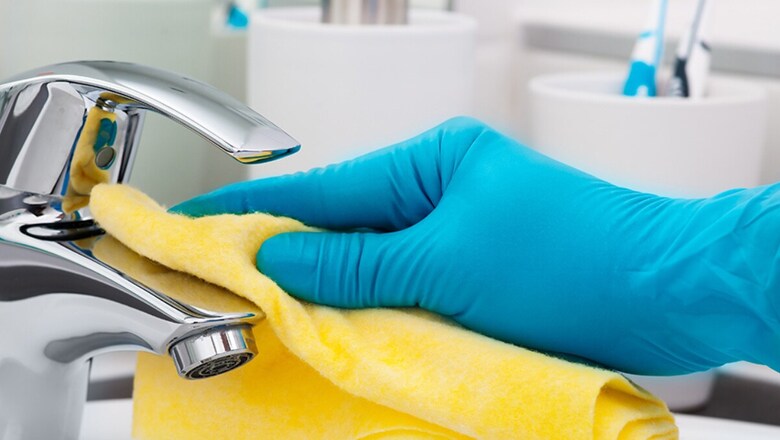
views
There’s a hole in our bucket.
As India marches steadily on to take its rightful place amongst the leading economies of the world, there is one niggling problem that is stealing productivity and wealth from our poorest communities: lack of adequate sanitation.
Of course, this isn’t just an Indian problem. The World Bank paints a stark picture: globally, inadequate sanitation syphons away a staggering $260 billion annually in lost productivity alone. This figure isn’t just a number; it translates to families struggling to make ends meet, businesses grappling with staff shortages, and entire economies losing their competitive edge.
The ripple effects of inadequate sanitation encompass overwhelmed healthcare systems too. From the common cold to life-threatening cholera, a multitude of sanitation-related diseases clog hospital beds and push medical resources to breaking points. In India, for instance, diarrhoeal deaths claim the lives of nearly 300,000 children under five every year, a tragic human and economic cost of neglecting sanitation. This strain on healthcare systems impacts the quality of care available to everyone, not just those directly affected by sanitation-related illnesses.
Beyond the immediate medical costs, inadequate sanitation also casts a long shadow on tourism. No one wants to go to pristine beaches choked with plastic waste, ancient monuments reeking of sewage, or public restrooms resembling biohazard zones. However, this is the grim reality in places with poor sanitation infrastructure, and it keeps tourists and their dollars away. This is the opportunity cost of poor sanitation.
However, the economic impact of inadequate sanitation isn’t confined to cold statistics; it weaves its way into the fabric of our societies and individual lives. The lack of access to clean toilets, particularly for women and vulnerable groups, hurts their chances of completing their education, finding jobs, and achieving economic independence. Children miss school because of diseases that arise from poor sanitation and hygiene. Girls who don’t have access to clean and safe toilets, prefer to stay home when they menstruate, often missing critical lessons and exams. It often feels easier to drop out.
Sanitation as a driver of empowerment
On the flip side, for every dollar invested in water and sanitation, there is a $4.3 return in the form of reduced health care costs for individuals and society around the world. Access to clean and safe toilets keeps our children in school, particularly the girls, and empowers the next generation to fly higher than their parents did. Clean and safe toilets in the workplace leads to greater workplace diversity and inclusion – when women, gender diverse people and people with disabilities have a safe place to go to the toilet at work, that’s one less area of friction.
Strong sanitation systems and policies mean cleaner, more beautiful surroundings. It means tourism and the boost it brings to local economies. It means cities that hum along even when there is too much rain or too little, because toilets are constructed using monsoon-proofing practices. It means dignity for sanitation workers, who have PPE Kits and safety gear, and the right tools and implements to do their jobs.
It is this utopian vision that guided the Govt of India in undertaking the much lauded Swachh Bharat Mission. Between 2014-2019, in just Phase 1 of the program, Swachh Bharat Mission succeeded in constructing toilets for every Indian. But as the Sub-Group of Chief Ministers on Swachh Bharat Mission found, that is just half the solution. We need to bring about behavioural changes en masse, at a societal level, to change our attitudes about sanitation.
This is where the GoI needs active, vocal partners like Harpic. Harpic has, as India’s leading brand in the lavatory care segment, vocally championed the cause of toilet hygiene through innovative and thought provoking campaigns and outreach programs. Harpic, together with News18, also created the Mission Swachhta aur Paani initiative 3 years ago. It is a movement that upholds the cause of inclusive sanitation where everyone has access to clean toilets. Mission Swachhta aur Paani advocates equality for all genders, abilities, castes and classes and strongly believes that clean toilets are a shared responsibility.
Under the aegis of Mission Swachhta aur Paani, Harpic has reached out 17.5 million children across the nation via their partnership with Sesame Workshop India to promote positive sanitation, hygiene knowledge and toilet behaviours among children and families through schools and communities. Why children? As the Sub-Group of Chief Ministers on Swachh Bharat Mission found, children are much more receptive to these messages, and often serve as ambassadors, encouraging their families to construct and use toilets safely and correctly.
Through Harpic World Toilet Colleges, Harpic is also changing the way sanitation work is viewed, uplifting the entire profession, and creating dignity and safety for sanitation workers. These empowered sanitation workers make exceptional ambassadors of change in their own communities, and in the communities they serve; often helping users who may be too embarrassed to ask questions elsewhere.
Moreover, through Mission Swachhta aur Paani, Harpic is creating a platform for the right stakeholders to come together to ideate and explore creative solutions to our problems today. It is going to take many conversations like these, and the actions that follow to usher India to a brighter, safer, and healthier future.
Join your voice to ours here, and help us march towards a more Swasth and Swachh Bharat.



















Comments
0 comment